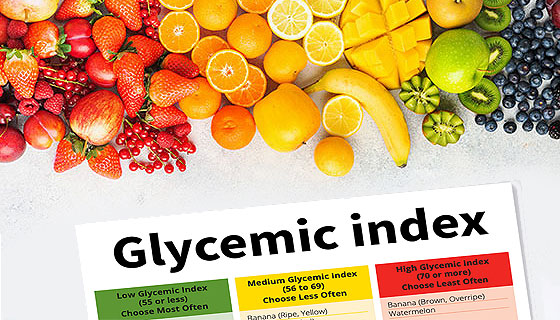What is the Glycemic Index, and how does diabetes relate to it? The rate at which the carbs in a certain food rise blood sugar levels after consumption is measured by the glycemic index (GI).
Blood sugar levels rise more slowly and gradually in response to foods with a low GI value than in response to foods with a high GI value. These consist of green veggies, the majority of fruits, nuts, olive oil, spices, kidney beans, chickpeas, lentils, oats, milk, sweet potatoes, meats, eggs, and seafood.
In the meantime, items like instant spaghetti, white bread, potatoes, melons and pineapples, short-grain white rice, cookies, breakfast cereals, and some wheat goods.
The range of the glycemic index is 1 to 100. A food item is considered low GI if its score is less than 55, indicating that it won’t cause a surge in blood sugar levels.
- Low-GI foods: less than 55
- GI of medium-sized foods: 55–70
- GI foods that are higher than 70
It also relies on what you do throughout the day. For extra energy, foods having a high glycemic index may be beneficial for individuals who lead very active lives.
Those with diabetes or those at risk of getting the disease can better control their blood sugar levels by knowing the GI of the foods they eat. A lower GI diet can help keep blood sugar levels more consistently up throughout the day.
Lower GI foods release energy more gradually, preventing energy crashes and encouraging feelings of fullness and satisfaction.
Low-GI foods can help regulate hunger and are generally more satisfying, which may help with weight management and lower the risk of obesity.
Low-GI diets before exercise may offer a longer-lasting energy supply and increase physical activity endurance.
A diet rich in a range of low- to moderate-GI foods, like whole grains, legumes, fruits, and vegetables, is linked to a lower risk of developing chronic illnesses like heart disease, type 2 diabetes, and some types of cancer.
People can choose healthier foods that improve their health and well-being by knowing the glycemic index of foods and using this information while meal planning.




























